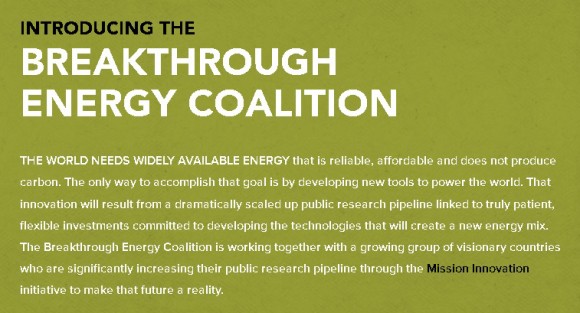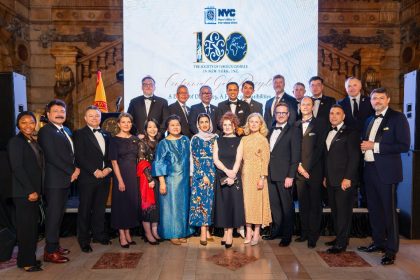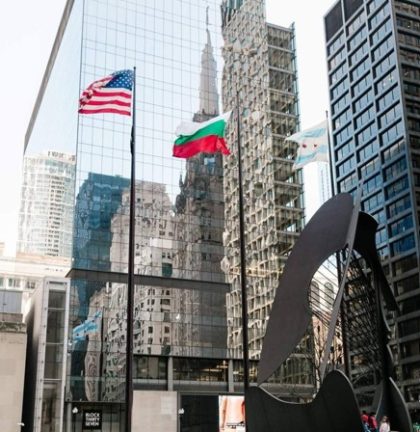THE FOURTH INDUSTRIAL REVOLUTION IS GATHERING GAINING SPEED
THE INTEGRATED COMPLEXES FOR BIOLOGIAL PRODUCTION OF FRUIT AND VEGETABLES, HARVESTING AND DELIVERY
.
By Marin Midilev
One day before the negotiations summit or conference of the United Nations on climate at the beginning of December 2015, a coalition for clean energy investments through innovations was made by the name of – Breakthrough Energy Coalition.
“We don’t know where the best ideas will come from to transition the world to a near zero-emissions energy future, so we will invest across a number of sectors: Electricity generation and storage, Transportation, Industrial use, Agriculture, Energy system efficiency.”
For more information:
http://www.breakthroughenergycoalition.com/en/index.html
http://mission-innovation.net/
The 46th Annual Meeting of the World Economic Forum will be held in Davos-Klosters, Switzerland, on 20-23 January. The theme of the meeting is “Mastering the Fourth Industrial Revolution”.
For more information:
https://agenda.weforum.org/2015/11/what-is-the-theme-of-davos-2016/
https://agenda.weforum.org/tag/fourth-industrial-revolution/
Part of the upcoming solutions are based on integration of existing technologies and systems in INTEGRATED COMPLEXES FOR BIOLOGIAL PRODUCTION OF FRUIT AND VEGETABLES, HARVESTING AND DELIVERY
Short summary
The available workforce for indoors and outdoors fruit and vegetable production for fresh consumption is progressively decreasing not only in Bulgaria, but also in the whole of southern Europe. There are various reasons for this.
Around the world there are areas of hunger and malnutrition. The world population is increasing in geometric progression. The erosion of fertile areas is increasing globally.
Manual labor is regarded as: monotonous, without need for qualifications, heavy and unattractive, less efficient and low-paid.
The existing mechanization and automatization as an operating principle is not able to replace manual labor. This is due to the different periods of ripening of the fruits and vegetables of one sort, picked from each plant on the plantation during harvest.
Fruit and vegetables when consumed provide part of the energy, necessary for each individual’s life.
Conventional sources of energy – oil, gas, coal and uranium ores worldwide are running low. The price of energy is constantly increasing. To produce the carbon energy sources the Earth has been transforming solar energy and biomass for hundreds of millions of years. Timewise solar energy and biomass transformation into standard fuels show low coefficient of performance rate.
So far the experimental prototypes of robots developed for harvesting strawberries, melons, cucumbers, cherry tomatoes, table grapes, tomatoes, mushrooms, tangerines and oranges, as well as the planting activities are only constructed for one type of operation. Their management is complex and they also have low efficiency. Their implementation in production is not cost efficient.
The available Robotized (automated) packaging techniques are also not efficient enough. They have high costs of transportation for raw materials and ready products.
There is a need of complex automatization in order to obtain optimal replacement of manual labor in organic production, harvesting and delivery of fruits and vegetables for fresh consumption.
Basic technological process for the production of organic fruit and vegetables on open areas using manual labor for harvesting – common technological process:
Due to the fact that every agro-cultural sort has different technological processes of growing mainly related to its characteristics and also to the fact that there are new technologies implemented for some particular activities, I will present you a short summary. Particular elements of the process are typical in certain cultures with annual and perennial periods of vegetation. The operating principle in brief is:
1. Preparation of the area for growing – plowing, cultivation and trenching;
2. Production of seedlings and „planting of the seedlings’ – if necessary;
3 Formation of beds (rows) deployment of the system for drip irrigation and mulching of the beds (rows);
4. Planting and transplanting;
5. Activities during growing – irrigation, cleaning plants from superfluous stems and leaves, weeding, fertilizing and hoeing;
6. Harvest and storage;
7. Exporting the full packaging and loading the vehicle;
8. Transport and unloading;
9. Quality control, sorting, warehousing, palletizing and loading transport for delivery to a shopping site;
10. Unloading and storage;
11. Purchase by the customer and transport to a temporary storage before consumption;
12. Packing away the drip irrigation system and cleaning the area by the system mulchirane.
Basic technological process for ecological production of fruit and vegetables in open areas with Integrated Complex (IC)
Activities in IC:
1. Robotized production of seedlings;
2. Robotized formation of beds, robotized mulching and deployment of an alternative system of the irrigation system;
3. Transportation of the produced planting seedlings and or robotized planting actions or robotized propagation activities;
4. Transportation of the materials needed for the growing season, robotized weeding of the plantation during the growth, Robotized collection of raw material for biofuel and its transformation into biomass, transportation of the biomass to processing plants for biofuel;
5. Robotized harvest of fruits and vegetables for fresh consumption, quality control and storage, packaging and delivery to the end customer, vacuum packaging and placing a bar code with weight information and the expiration date;
6. Automated harvesting and automated unloading means of transport (transport logistics);
7. Transportation to the end user or supply chain and automated stocking of the vending machines;
8. Sale through cashless payment of production;
9. Robotized collection of the green mass – cleaning the area of plantation, turning it into biomass on the field and transport of the obtained biomass to the plant for the production of biofuels;
10. Robotized de-installing of the system for mulching and alternative irrigation.
11. Others
Robotized harvest allows 24 hours per day of loading while in manual labor, workers can be optimally effective for six hours a day during the harvest.
The basis for the establishment of Integrated Complexes is the harvest activity – determining a suitability for picking of the fruit from the plant, picking and subsequent initial storage.
Types of Integrated Complexes
According to the height of the plant the Integrated Complexes are divided into three types: For low stem plants – up to 60 cm, for medium height plants with stem – up to 1.9 meters and for plants with stems of over 1.9 meters height.
According to the plants type – annuals or perennials (orchards).
Indoors and outdoors:
In indoors production process, the Integrated Complexes are designed for one sort of fruit or vegetable because the harvest process can be maximum 365 (366) days a year.
In open areas the harvest time is short for the different sorts of fruit and vegetables, which in turn requires combination in types or sorts. An exception is the okra whose harvest period can be about 100 days a year.
Strawberries, through combinations in sorts, can reach harvest period of up to 180 days a year.
In an Integrated Complex there is one or several integrated systems for harvesting and storage with accompanying systems of internal transport in the plantation. For plants with low and average height of the stem, the harvesting robots are mounted on robotized platforms – harvesting robotized platforms. For plants with average height of the stem, the robotized platforms are telescopically lifting.
The delivery (transfer) at long distances is done with cargo drones VTOL systems with capacity of about 30 tons, at a short distance the delivery can be done with square or hexa or octocopters – drones as well as with ground mobile robots to the consumers (smart appliances at homes or in restaurants). Meanwhile it can be stored in vending machines.
As an operating principle the systems for creation of orchards areas are also suitable for reforestation of deforested areas.
Others
The integration of existing systems and technologies could start in an existing FABLAB (fabrication laboratory) having attitude to the solutions of tasks or in a newly created one.
.







